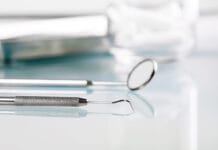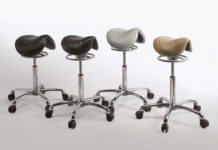Most developing countries have seen a noticeable dental health improvement in the last few decades. Fluoride toothpaste and improved oral hygiene have been linked to this significant growth.1 In the United States, water fluoridation, sealant programs, shifting Medicaid reimbursement to increase access to dental care, and the authorization of dental therapists to increase access to dental care has led to an improvement in oral health, according to the Pew initiative.2 Though, challenges for more significant improvement still present enormous challenges.
However, in some countries, such as Norway, although policymakers do not dispute that dental health has improved, the implications of this shift have not been taken into account. It’s always assumed that improvements in dental health would automatically lead to decreased demand for dental care. In Scandinavian countries, the number of people per dentist is quite high, just over 1,000, which begs the question if fewer dentists should be trained. If dental offices don’t have patients, their practice may fail. Arguably, in the United States, having too many dental professionals for the size of the population doesn’t seem like the worst problem to have.
What if dental health improved so markedly in the United States that we did need to adjust the dentists’ workforce? (Read on to see how the data showed that dental hygienists would most likely continue to be in demand) One could hope it could happen in the United States if it’s happening in other countries. Having assessment models from different countries might be helpful if it does happen.
Objectives
To evaluate the improvement of oral health in Norway, its effects on private practice dental services, and dentists’ workload, researchers Jostein Grytten and Irene Skau carried out a study published in the International Dental Journal.1 Few studies have examined the implications of improved dental health, most of which are out of Australia.1
Dental services in Norway fall into two categories: public and private. The public service provided dental care to all children, the geriatric population, and those with mental challenges. These services are free of charge and offered in nursing homes and institutions.1
On the other hand, private practitioners offer dental care to adults financed by the patient. Private dental practitioners can establish a practice anywhere, and the government only regulates the number of dental students.1
Methods
The study used data gathered using a questionnaire sent to all private dental care practitioners at the end of 2015 and 1992. The study was conducted in a joint project between the University of Oslo’s Department of Community Dentistry and the Norwegian Dental Association (NDA).1
It is worth noting that all private dental practitioners are members of the NDA. In total, over 1200 practitioners responded, giving a response rate of 56%.1
Results
Provision of Dental Care Services
Between 1992 and 2015, the number of visits per private practitioner dropped by 23%. The majority of that decrease was among young people below the age of 35 and men. In 1992, dental practitioners below 35 received 2382 visits. And after 20 years, at the age of 50 and above, these visits were reduced to 2144. Therefore, the number of patients reduced during their working life.1
The number of patients receiving bridges, dentures, restorations, or extractions fell by 50% or more; however, the number of patients receiving periodontal treatment increased over the same period.1
Deficit of Patients
The number of practitioners who reported a deficit of patients rose to 37% in 2015 from 20% in 1992. At the same time, those who reported an increase in the number of patients reduced from 10% to 3%.1
An analysis of the population survey further revealed that the number of dental preventative care patients rose from 57% to 88%.1 This shows there doesn’t seem to be a deficit in the need for dental hygienists.
Norway has experienced an improvement in dental health in the last few years. For instance, the number of missing, decayed, and filled teeth for 18-year-olds (18-year-olds) reduced by 4.3% between 1990 and 2019.1
In 1990, almost every 18-year-old struggled with dental caries or had restored teeth. Thirty years later, a third of them reported they’re caries-free. This explains why the majority of dental practitioners reported having a deficit of patients.1
Discussion
In Norway, the most frequent recall interval in 20-39 years olds is currently 24 months as opposed to 12 months in 2004. The researchers postulate that the recall interview will likely continue to increase because patients without dental disease may not feel as frequent appointments are necessary.1
In Norway, there is expected to be an increase in the dental hygiene workforce as dental hygienists have a legal right to provide diagnostic and preventive services. Hygienists have had an increasing responsibility to diagnose oral disease, which will likely result in a decreased workload for dentists. Dental hygienists have been educating patients well in regard to oral hygiene and nutrition (sugar consumption effects), which has led to an educated population in dental health.1
Conclusion
Although they are extremely important, few studies have examined and explained the impact of dental health improvement on dental services. Such research provides useful insight into whether dentists should adjust their service provisions in line with the changes in dental health. This research and assessment can lay the groundwork for the United States if the need arises.
On the other hand, this research sheds light on the continued need for dental hygienists and how preventive services and the education they provide to patients have played a major role in the health of Norway’s population.
Before you leave, check out the Today’s RDH self-study CE courses. All courses are peer-reviewed and non-sponsored to focus solely on high-quality education. Click here now.
Listen to the Today’s RDH Dental Hygiene Podcast Below:
References
- Grytten, J., Skau, I. Improvements in Dental Health and Dentists’ Workload in Norway, 1992 to 2015. International Dental Journal. June 2022; 72(3); 399-406. https://www.sciencedirect.com/science/article/pii/S0020653921001362
- Corr, A. (2022, March 14). America’s Oral Health is Improving Thanks to Better Prevention and Expanded Access to Care. PEW. https://www.pewtrusts.org/en/research-and-analysis/articles/2022/03/14/americas-oral-health-is-improving-thanks-to-better-prevention-expanded-access-to-care#











